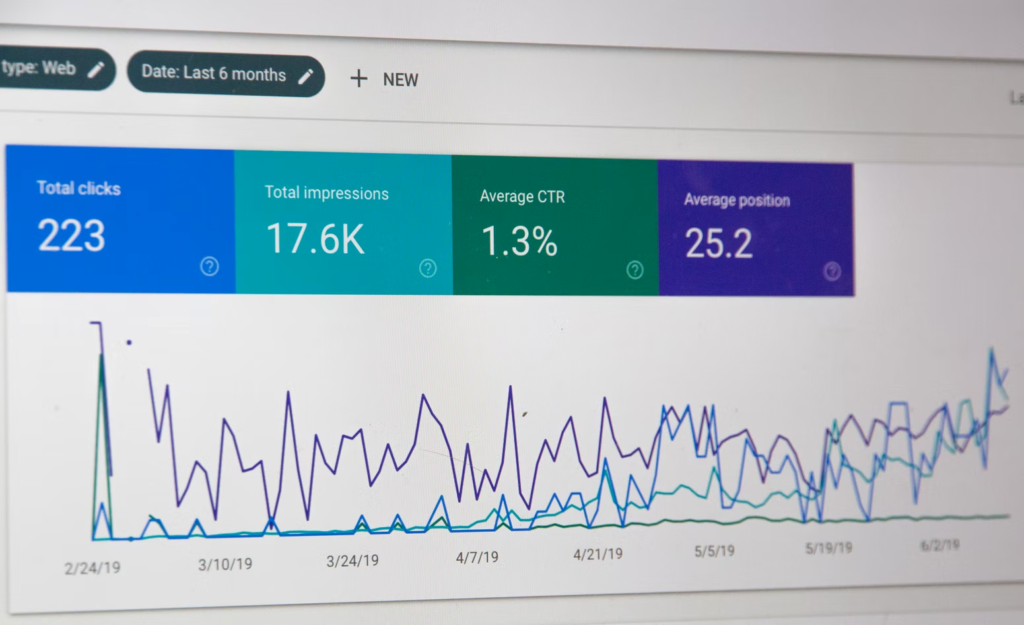
The number of B2B e-commerce firms around the world keeps increasing. Because of this rise, businesses are compelled to use B2B marketing strategies that are both profitable and exciting to survive in an increasingly competitive environment.
In the B2B sector, marketing expenditure accounts for 6.4% to 6.8% of total revenue. B2B marketing strategies for some companies tend to focus on simple techniques, such as messages sent directly to customers or a target audience group.
By being captivating and persuasive, this strategy aims to get the audience to interact and connect with the services you are offering.
B2B marketing strategies have greatly broadened as the purchasing habits of professional service buyers have evolved. To find and evaluate a company, consumers are prone to use Google search more than personal references. These kinds of strategies should be a part of your marketing arsenal.
1. In-Depth Research

Research must always serve as the starting point for any modern marketing effort. You will make an educated decision with the support of a wide variety of studies that have been assessed by your peers, including market research and brand research.
In addition to this, these data will provide you with a strong framework for your marketing activities and helpful benchmarks that you can use to measure the effectiveness of your strategies.
Brendan Wilde, Marketing Manager of Mortgages says
“To better serve your customers, conducting research will help you understand who they are, what they like, and what language they respond to.”
An additional benefit of conducting market research is understanding how well your techniques work. This gives you a much easier time deciding which strategies to increase or strike out and which components of your product and services are the most lucrative.
Research has a definite impact on society. According to this study by Hinge Research Institute, businesses that carry out comprehensive research on both their prospective clients and existing consumers experience three to ten times better financial performance and approximately twice higher profits than their competitors who do not engage in research activities.
2. Niche Down

Niching down means carving out a smaller segment of your audience and targeting them. This way, you can provide more specialized services that are directly in tune with their needs.
You’re having trouble getting your message out to your target market. Your competitors are using direct mail and you’re not. You can try FSSI Splash, direct mail marketing service, to reach your target market!
Specialization & niche targeting are critical to your success as a business owner. It has been demonstrated severally that businesses with the most rapid expansion rates tend to specialize in a relatively narrowly defined field of expertise.
It would help if you focused on the area where you can establish yourself as an unquestionable authority and leader. It sets you apart from the competition and also builds audience trust.
As a result of expertise, your marketing endeavors become easier, as you know exactly how to reach your audience and trigger them to purchase. Differentiating yourself by specializing is one of the oldest and most effective tricks in the book.
Neal Taparia, who runs the word games site Unscrambled-words explains,
“It’s better to be different than better. When you focus on being better, you end up being in a never-ending race. Try to separate yourself from the pack through differentiation or expertise, and it will take your business to the next level.”
3. Build a Fast and Efficient Website

For B2B sales, digital channels are expected to account for 17 percent of the total by 2023, compared to 14 percent in 2020. Therefore, your company’s website is a critical asset in today’s professional services market.
When a company has a successful website, it serves as the center of its online presence and a wealth of information about the company’s capabilities in the marketplace.
Robert Walden, the Founder of VehicleFreak says
“Building your brand’s online presence requires the use of a website. If you want to bring in new clients, the website that represents your business must be easy to navigate for those clients. You can also show the market that your organization is competent with a fast and responsive website.”
Visitors can be enticed to spend more time and money on your site as you provide them with valuable information and offers specifically tailored to their needs.
Your website’s speed and overall design are also important. About 73% of web designers strongly believe that a non-responsive web design pushes visitors to leave a website. 61% of participants in this same study said a bad design pushes visitors away, while over 88% agreed that visitors would leave a website if it takes too long to load.
As a result, firms have a great opportunity to differentiate themselves and build a trustworthy brand by leveraging the power of good web design.
Adam Wood, Co-Founder of RevenueGeeks says “Accessibility on various platforms, particularly mobile devices such as smartphones, is becoming an increasingly significant factor for your website.”
Studies show that about 50% of customers prefer to access a website from their mobile phones instead of downloading an app. Because of the increasing number of individuals conducting business on mobile devices, responsive design has emerged as a critical element.
Due to Google’s impending move to reward “mobile-friendly” websites with higher search rankings, responsiveness will be necessary for businesses.
4. Search Engine Optimization SEO

Previously, we discussed the importance of your website’s ability to be found by your target audience. Let’s explore how search engine optimization (SEO) plays a role.
SEO is critical to online marketing, and in our research, high-growth companies rank them as the most effective tool at their disposal.
Although this is a multifaceted and ever-evolving field, the following are the two most essential elements:
- On-site SEO: This aims to inform search engines about the content of your website. On-site SEO uses keyword phrases specific to your site to convey important concepts to your target audience. Your services & aptitude are likely to focus on these keyword phrases. As a result, search engines can provide users with more relevant results. You’ll be found by people looking for information on the subject matter you specialize in.
- Off-site SEO: It majorly involves getting backlinks to your website from other websites, preferably in your niche. This can be done by partnering with them or writing guest articles. As a result of your efforts, your website will become a more well-known authority on its subject matter says Nick Rubright, Outreach Specialist at PSONO.
5. Social Media

Did you know? About 81% of consumers conduct research into new service providers via social media, making this platform a more prominent information source than formal referrals and recommendations.
It is expected that this year and beyond, consumers will fully expect to be able to buy products and services directly on social media. Using social media to spread your name, expertise, and content is a simple but effective strategy.
Bram Jansen, Chief Editor & Co-Founder of VPNAlert says
“With the help of social listening, you’ll be able to keep tabs on your brand and connect with people who can help you grow. When it comes to B2B PR placements, social media is an excellent tool for spreading the word.”
This is an important step that is often overlooked by companies and even B2B PR firms. They stop their efforts as soon as they get some press.
Even if you’re doing all of the above, you’re only reaping a fraction of the rewards that could be yours because you’re not amplifying your PR coverage.
However, one practical and easy tip is to share the article, podcast, or whatever else was written about you on your own social media channels. Increase your press’s exposure and visibility and show the outlet that you appreciate and want it to succeed.
6. Advertising

Your company can effectively advertise on a variety of platforms, including the following:
- Company publications and websites
- Social media
- Using Google AdWords and other search engines advertising platforms like Bing and Yahoo
- You can track your customers’ web movement and serve them relevant ads using retargeting, a cookie-based technology.
- Promoting your products and services through advertising can also increase the number of people who download your content, giving you a larger audience and more exposure.
Nevertheless, professional services should be advertised using media best suited for that type of service. Since you can more directly target industry audiences with LinkedIn, retargeting, and other industry-specific advertising, these methods work best in conversions, click-through rates, and cost per download.
On the other hand, SEO is sometimes more expensive and difficult to target for professional services. Facebook’s advertising is less effective than those of other social media platforms for certain businesses since many young consumers rarely utilize Facebook to find services.
However, it’s essential to keep in mind that each type of advertising has many variations. According to the company’s budget, ad purpose, target audience, and industry niche, they may be more or less successful.
7. Referral Marketing

As we mentioned, referrals for professional services have evolved, which has significant ramifications for your B2B marketing approach.
Studies show that 37% of customers stick with a company after a referral and any B2B company that invests in referrals increases its conversion rate by 70%.
Eric McGee, Senior Network Engineer at TRG Datacenters says
“Your brand’s reputation, expertise, and customer service are the driving forces with referral marketing. Focusing on these factors can help you build a brand that has a well-deserved reputation as an expert in your field and is recognized even by audiences who haven’t had direct contact with you. This can lead to new customers and referrals.”
8. Marketing Automation, CRM, & Lead Nurturing

-
Marketing Automation:
Automated processes, backed by technology take the place of labor-intensive, time-consuming ones. It allows you to create, manage, and measure campaigns across your e-marketing media from a single interface.
Marketing automation software must be chosen carefully, just like another technological tool. Check if a potential solution’s quantity, sophistication, and scalability are a good fit for your requirements.
-
CRM:
Customer Relationship Management (CRM) software is also essential. Using a CRM system is common among many businesses. An effective CRM strategy allows you to stay regulated, organized, and engaged even as your operations become more complex.
In your CRM software, you store all of the data you gather about potential clients and business opportunities and any interactions you have with them. Your company’s employees can collaborate on a single project using a chosen project management software by accessing and entering relevant data.
-
Nurturing:
Nonetheless, CRM isn’t a one-stop shop. You, as a marketer, can make both soft and harsh demands to particular buyer roles, depending on where they are in the buying process.
Remember the content funnel for nurturing leads? You need both a website and email marketing to make this work. You can also use drip email campaigns to send more targeted offers over time to specific segments of your audience.
The more relevant and timely certain content and offers are, the more likely users are to stay engaged and learn more.
9. Testing and Optimization

With testing & optimization, it’s possible to duplicate certain/peculiar marketing endeavors and make decisions based on clear information rather than your sentiments.
Joe Troyer, CEO & Head of Growth of Digital Triggers says
“When it comes to your marketing, research with proper testing and optimization serves as the foundation of your strategy. It would be best to stop experimenting with and fine-tuning your marketing campaigns.”
For example, it is possible to determine which of the two mediums, emails or landing pages, is more effective at converting users by using A/B testing tools.
10. Reporting and Analytics

When it comes to measuring results, you must use the appropriate analytics. Keeping track of your website, social media, and SEO efforts will necessitate tools.
Your website’s traffic can be measured and analyzed using Google Analytics. Search engine optimization tools like MOZ and Hootsuite can help you track and improve your social media performance.
Robert Smith, Head of Marketing at Psychometric Success says
“Just like you use PowerPoint templates for presentations, marketing thrives with the right tools and information at your disposal. Analytics are your eyes into how your audience is responding to your different marketing strategies. Your success or failure can be determined by using analytics and testing. Use them, embrace them.“
Conclusion
Regardless of how quickly the e-marketing landscape changes, marketers who collect and use statistics across multiple marketing channels will have an advantage over their competitors.
We’ve covered a lot of B2B marketing tactics in this article, but the key is to pick the right one and execute it correctly. Some of the most crucial B2B marketing strategies to be aware of and utilize are listed and explained here.





